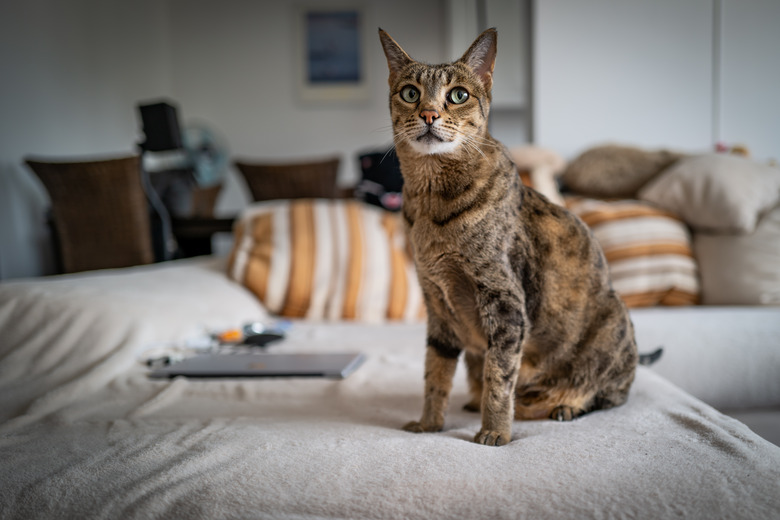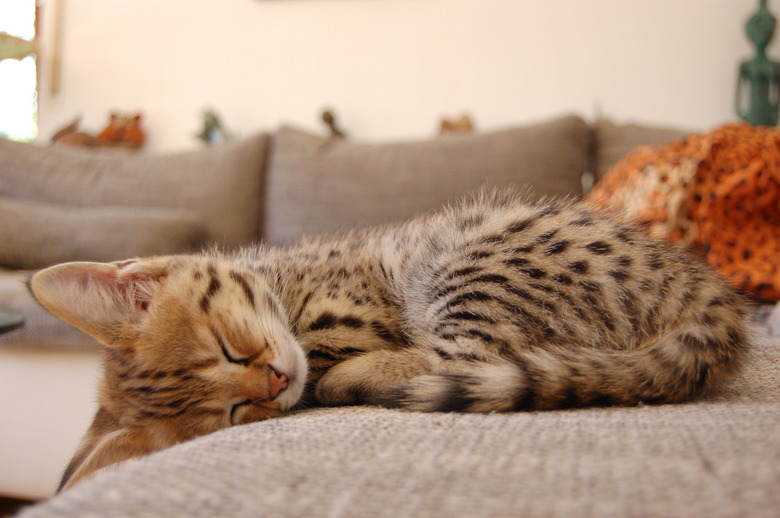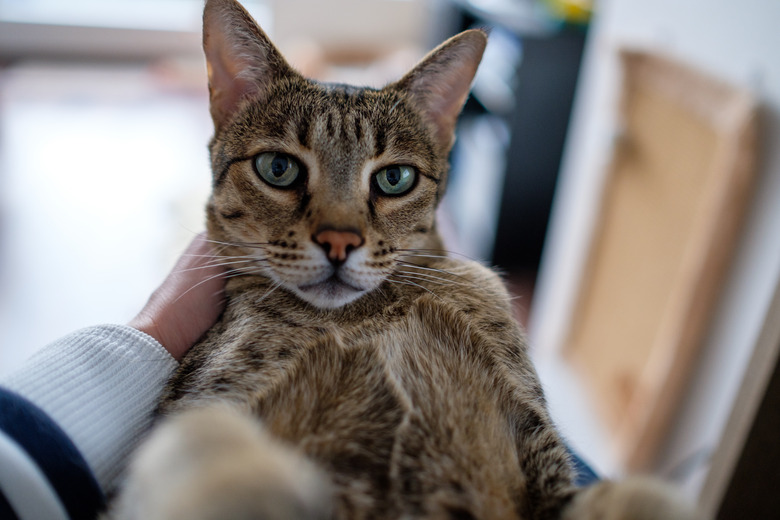What Is A Savannah Cat?
While you might not know what a Savannah Cat is, you've definitely seen these kitties walking around on a leash — if not in real life, then definitely on Instagram. They're pretty much impossible to forget.
It's easy to see why Savannah Cats have become such a hit on Instagram and TikTok. With their long legs and dark-spotted fur, these striking cats command attention in any room they walk into. They're also surprisingly dog-like and love to play fetch, making them even more strange and lovable.
Here are some things you might not know about these utterly fascinating cats:
Despite their name, the first Savannah Cat came from the US
Despite their name, the first Savannah Cat came from the US
To make a long story super short, the first Savannah Cat was basically an accident.
According to the Savannah Cat Association, Judee Frank, a Bengal Breeder based in Pennsylvania, was taking care of a male serval, Ernie, for another breeder. On April 7, 1986, Frank woke up to find her female Siamese cat had a kitten, and quelle surprise, Ernie was the father. Frank didn't even know her cat was pregnant; nevertheless, she named the kitten Miracle. The cat (and breed) were later re-named Savannah.
Savannah drew the interest of many other breeders, who, over the years, began breeding domestic cats with servals. Even Savannah herself was eventually bred with a Turkish Angora named Albert II. The breed has since become a favorite among a certain group of feline enthusiasts for their outgoing temperament and dramatic appearance.
Savannah Cats have different generations
Savannah Cats have different generations
Savannah Cats look like they have wild ancestors, but the truth is, they're pretty far removed from an actual wild cat in the African Savanna. Even F1 Savannah Cats — a cross between a serval and a domestic cat — are nothing like what you'd see on Planet Earth. In fact, Savannah Cats are known for being super people-oriented and affable.
Breeders categorize Savannah Cats by different generations (e.g. F1, F2, F3 and more) based on how far removed they are from the initial serval-domestic cat cross. Although Savannah Cats from earlier generations tend to be larger, any Savannah Cat can vary in size. The biggest Savannah Cats can weigh up to 25 pounds, which is more than some small dogs weigh.
One of the wildest things about Savannah Cats is their cost. F1 Savannah Cats are almost always the most expensive, in part because it costs breeders several thousands of dollars to purchase the parents of an F1 kitten. These serval-kitty cross they produce will cost you around $20,000 easily — and that's before all the cat litter and toys.
Savannah Cats are not legal everywhere
Savannah Cats are not legal everywhere
Savannah Cats have a fair amount of controversy around them, especially when it comes to ownership. States have a hard time categorizing Savannah Cats as either exotic or domestic animals. As a result, different states have different laws around Savannah Cat ownership — some, like Nebraska, outright ban them for what they consider to be public safety reasons. Others, like New Hampshire, permit later generations (e.g. F4-F8) and not others.
Savannah Cats are not your typical cat
Savannah Cats are not your typical cat
Savannah Cats have lots of little quirks. They love to play and love water — especially sinks and pools, for some reason. They also have extremely distinct meows and are known for being highly talkative when they want attention.
Though all cats love to jump, Savannah Cats can jump ridiculously high. Some, like Zoey the F2 Savannah Cat, can jump about six feet to turn off the lights. Others can jump up to eight feet, so all refrigerators and cabinets become landing pads for their massive leaps.


